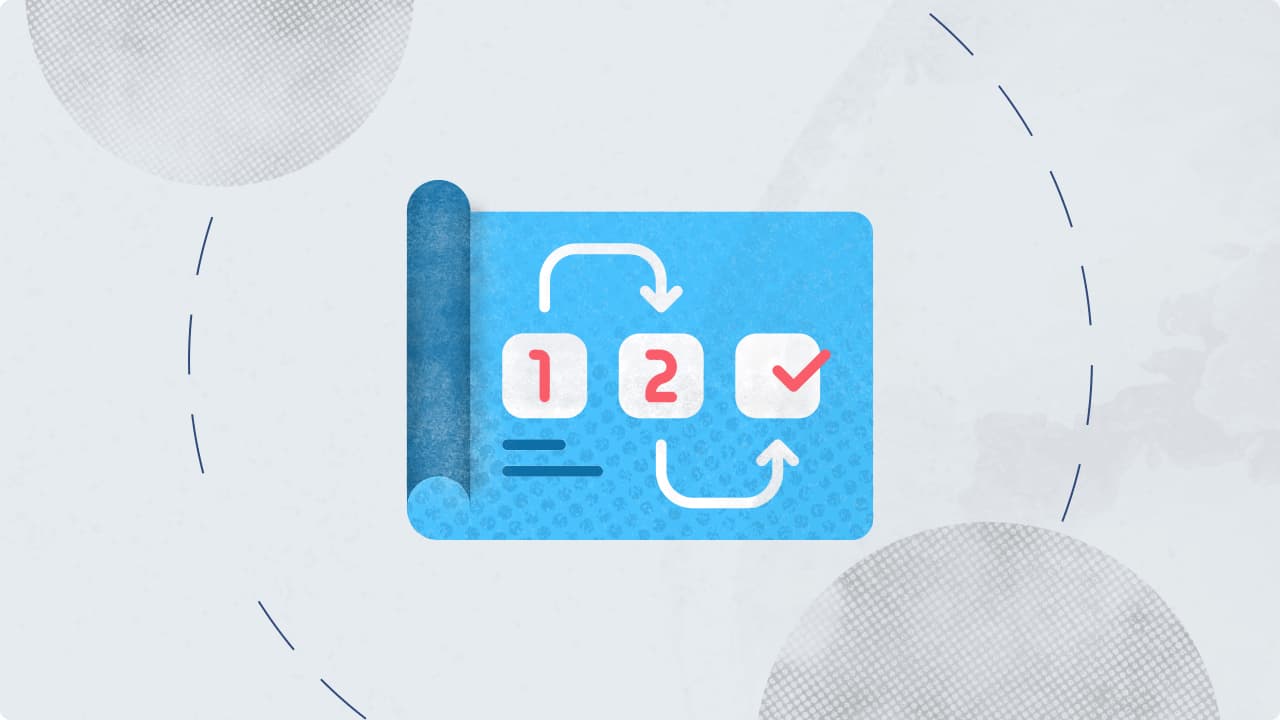Research shows that 92% of retargeting campaigns perform the same as or better than search.
Google remarketing lets you adjust your ads so that they target people who have already landed on your site. These are the prospects who know a little bit about your brand and what you’re all about.
And the best thing is that all you’re doing is retargeting. There’s no need to look for new prospects (although you should still work hard on your SEO content marketing in a bid to drive more traffic that can later be retargeted!).
You can tailor your ads in such a way that you’re able to target them with content and offers that can resonate with them.
In this article, we will be sharing five functional and creative remarketing examples that have worked well in the past. We’ll also be explaining why they work - and how you can come up with some awesome remarketing ads of your own.
- What is a Google Remarketing Ad Campaign? (And Do They Work?)
- 5 Examples of Remarketing Campaigns That Work
- Remarketing Tips & Tricks
- Conclusion
You can directly jump to a section of your choice or keep scrolling.
What is a Google Remarketing Ad Campaign? (And Do They Work?)
A Google remarketing ad campaign is one in which prospects see ads from brands whose websites they’ve already visited.
For instance, it might be the case that a customer added a few items to their cart but backed out when they saw the high shipping cost. In this situation, you could retarget them with a banner ad that offers free shipping (or take another desired action, such as sign-up to your email list).
All you have to do is add a piece of code to your site and create the ads in order for them to work!
On that note, you might ask "do remarketing ad campaigns actually work?"
Well, here’s the thing: remarketing campaigns can be super cost-effective if you get them right, and indeed you could pay as little as $0.66 per click. That’s not bad at all, but exactly what you pay will depend on your bid, your bid strategy, and your targeting.
The reason remarketing ads are so cost-effective is because you’re retargeting people who have already expressed an intent (and this is also the reason why remarketing campaigns result in less ad fatigue with the end user). You just need to run ads with a clear CTA that seals the deal.
Let’s now take a look at 5 examples of remarketing campaigns that work - and what you can learn from them.
5 Examples of Remarketing Campaigns That Work
1. Booking.com
Booking.com is a highly successful online travel agency that helps people find travel lodgings, such as hotels, all over the world.
It’s owned by Booking Holdings, which back in 2014 - when it was known as Priceline - was noted as being one of the biggest ad spenders on Google.
In 2018, they spent over $1,000,000,000 on Google ads in the fourth quarter alone.
That’s still the case today, the company often uses super aggressive tactics to get ahead of the competition, drive more traffic and make more sales.
It’s crucial that a travel agency like Booking.com uses Google remarketing because holidaymakers are notorious for shopping around for accommodation. They will visit the Booking website, take a look around and then visit other websites to compare prices and options.
As such, Booking.com - and, indeed, other online travel agencies - can apply filters in Google AdWords to segment customers according to which pages they browsed, whether or not they commenced the reservation process before changing their mind - and so on, in a bid to draw them back in.

Image Source: WordStream
The ad above is a typical Booking.com remarketing banner ad. To the left is the name of their brand, while in the center is the hotel that a person has already clicked on (and perhaps commenced the reservation process on). This is a nice example of personalization.
And not only did Booking.com include the price next to the hotel, they also made sure to include how much the customer can save if they click this ad!
Booking.com also uses the classic FOMO tactic by creating urgency with “Last Rooms!” emblazoned in red (for danger).
Lastly, we can see the clear CTA button “Book Now” to the far right, which is exactly where it should always be on a banner ad (our eyes read from left to right).
2. Grammarly
Grammarly started as a self-funded writing assistant tool that corrects spelling mistakes, improves grammar and fine-tunes the clarity of a piece of content.
Its growth was slow at first, until it managed to bootstrap its way to 6,900,000 daily users via a heavy remarketing campaign (among other things).
Grammarly is actually well-known for their remarketing campaigns. Below are a few stills from a video remarketing ad they created:

Image Source: iSpot.tv
Grammarly might only be a writing assistant tool, but check out the narrative structure they use. The video starts with a dramatic hook, with the words “TERM PAPER” plastered over an image of an anxious student.
This is super clever usage of text and visuals, as just the mere words “term paper” is enough to strike fear into the heart of every student who has a deadline looming. Grammarly - which targets students through this ad - certainly knows its audience well, and it’s retargeting them with emotive content that’s designed to make them feel worried.
Grammarly then presents us with a close-up of the student burying her head in her hands, before ending with a CTA that solves the issue.
It’s both a clever and engaging video that presents a problem, antagonizes the problem before delivering a solution.
Let’s take a look at one of their banner ads:

Image Source: Business 2 Community
This is a simple but effective banner ad that tells you exactly what Grammarly can do in terms of its features, and it also uses powerful words like “Confidence” to make the reader feel good. A bright red “OPEN” button, meanwhile, is perfectly placed.
But what can we learn from Grammarly’s remarketing campaigns? Integrate as many channels as possible. Wherever your customers are - go there and find them.
3. AirBnB
AirBnB is one of the most famous online marketplace for vacation rentals and other types of lodgings. Its valuation shot up to over $1,000,000,000 in 2021.
So why would one of the world’s most successful online marketplace of its type even use remarketing ads? After all, everyone who’s searching for vacation rentals online will always checkout AirBnB at some point.
Over the years, AirBnb has traditionally thrown lots of money at their marketing efforts, with paid search coming out on top as their biggest driver of traffic.
So are remarketing ads really worth it for AirBnb?
Yes.
Even for a company as huge as AirBnB, remarketing ads make lots of sense because AirBnB is just like any other company - they also have competitors.
And when a customer is in the consideration stage, they’ll be comparing options on AirBnB with options on rival sites, such as Booking.
AirBnB retargets customers who have already checked out a property, but haven’t made a decision on it yet.

Image Source: WebFX
A key feature of AirBnB’s ads is the photo. As you can see from the image above that was used on Facebook, a photo of the property dominates the ad space, with AirBnB believing that the property itself is the key selling point, and therefore using it to remind the end user of the beautiful property they can snap up today.
Essentially, they’re retargeting customers with pretty pictures that put them in that vacation mindset. This is their value proposition - the reason why someone should buy their products. Because banner ads are so condensed, it’s not always easy to reinforce the value proposition, but AirBnB does it well.
AirBnB also lists exactly what the customer stands to gain - an entire home consisting of four bedrooms for four guests.
The CTA is clear and direct, and makes it easier than ever for the customer to return to the site and place their order.
AirBnB also tends to use a lot of emotive language in their ads. For example, they’ve used phrases like “Free Cancellation up to 48 Hours” and “Round-the-Clock Customer Service”, which go a long way to reminding the customer of the kind of awesome experience they’ll receive. Emotive phrases like this are ways to re-engage customers and build trust.
4. Spotify
Spotify is a hugely successful streaming service that has grown its number of users to 365,000,000 worldwide by 2021.
The company has relied on extensive word of mouth to boost its usage rate for years, but it’s never shied away from throwing large sums of money at marketing campaigns.
Again, you might be tempted to ask the question - does Spotify, which already dominates its sector, really need to use remarketing?
You bet.
Let’s consider Spotify’s business model: It’s a freemium model whereby customers can use the service for free on the condition that they’re happy to be shown ads.
If they wish to swerve ads and use additional features, they can upgrade.
As such, Spotify often uses banner ads to persuade existing customers to upgrade to Spotify Premium.
Check out the ad below:

Image Source: WebFX
This banner ad makes use of bright, loud colors that have Spotify’s youthful target audience in mind.
It also uses the power word “free” which is designed to excite the interest of users, and it presents an offer - current free users can upgrade to Premium for 3 months without paying a dime.
It’s a tempting offer that’s going to be very hard for existing users to pass on - and it’s a tactic that other companies who use the same business model can gain inspiration from.
There’s also a clear CTA at the bottom left, which again uses the word “free.”
5. Lexus
Lexus is a premium car maker. It’s the luxury arm of Toyota, and over the years it has embraced creative ways of making ads that stand out.
For instance, it once relied on Artificial Intelligence to create an entire ad!
As a luxury car maker, brand management is, of course, central to what Lexus does - and this extends to its remarketing ads.

Image Source: WordStream
In the image above, there is no sign of a car. This in itself isn’t unusual for a car ad, because marketers often use powerful imagery to make their prospects feel a certain way.
That said, Lexus is actually being really clever with this piece of marketing. Everyone who’s shopping around for a Lexus knows what the brand stands for - luxury, comfort, and power.
With this ad, they’re advertising a new feature - a feature they hope will set them apart from the competition, and persuade the prospect to choose them over, say, Mercedes.
The ad stands out with a pair of human eyes that are gazing directly at the prospect.
This is hugely attention-grabbing and it catches the eye of anyone looking at it!
What’s key with this ad is what happens next, however. When you click the ad, it takes you to a landing page that introduces Lexus’s latest piece of innovative technology - in this case, a speaker system - via a video ad that uses the same color scheme. It’s as though the landing page ad is a continuation of the banner ad, and this seamlessness can be really captivating.
The landing page, then, makes good on the promise delivered in the ad. If, on the other hand, the ad simply advertised another car, the ad would lose its power, and Lexus’s cost-per-click might drop.
Pro tip: Make sure your ad is consistent with your landing page, as this is key to boosting your cost-per-click and your cost-per-acquisition.
Remarketing Tips & Tricks
If you feel you’ve gained some adequate inspiration and you’re ready to run your next Google remarketing campaign, here are some helpful tips and tricks to help you out:
Know Your Metrics
Metrics will help make better sense of your campaign’s performance so that you know what to focus on and what to eliminate.
Key metrics you should be monitoring include impressions (if your impressions are woeful it means that you need to address where to display your ads), clicks (higher clicks mean that your messaging is on-point; if your clicks are down, you will need to tweak your text, your CTA and your images) and cost-per-acquisition (how much is your campaign costing you? If your clicks are high but your conversions are down, you’ll need to assess your landing page to see what can be improved in order to clinch more deals).
Understand Your Sales Funnel
Where your customers are in the funnel should determine what types of ads you run.
For example, if a customer is in the interest stage, a good idea is to retarget them with products that they’ve already taken a look at.
If they’re in the evaluation stage, you’ll want to remove any lingering doubt in their mind about your products.
If they’re in the decision stage, it’s always smart to sweeten them up with a discount or the offer of free shipping.
And if they’ve already reached the purchase stage, you can retarget them with similar products or - depending on your business model - an upgrade.
Once you understand your funnel, you can work out precise remarketing campaigns that target the right customers.
Conclusion
The internet has seen some really cool remarketing ads over the years; are you going to blow them all out of the water with your next campaign?
While you should use the above examples as inspiration, it’s still super important that you think of ways to create ads that work for you. We suggest you think outside the box as much as you can, but that you also stick to the structures, elements, and formulas that have served ad-makers so well over the last few years.
A Google remarketing should be front and center of your thoughts as you seek to dominate your niche and boost conversions. It shouldn’t be your only strategy, though, and you should make sure to double down on your social media campaigns, as well as email marketing and video marketing.
Looking for a social analytics tool to track the performance of your marketing campaign? Try Statusbrew. With several ready-to-use reporting templates and total flexibility to customize these reports, Statusbrew will help you determine whether your social initiatives have led to positive results and where adjustments are needed to strengthen your marketing campaigns - in no time.
Statusbrew is an all in one social media management tool that supports Facebook, Instagram, Twitter, Linkedin, YouTube, and even Google My Business.




Explore the Statusbrew range of social media tools
Cancel anytime!